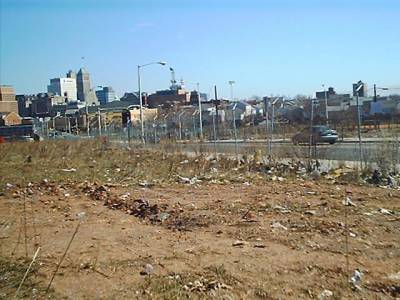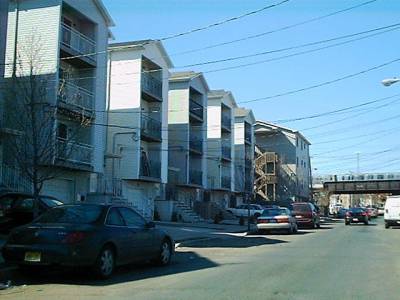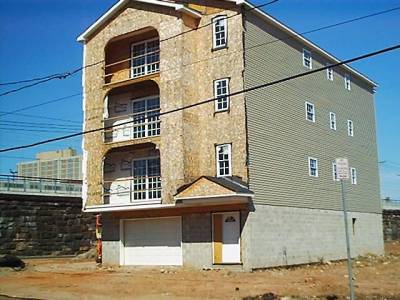|
Click above, for articles in
this issue.
LOST CITY
Newark
has been a great city. Its history
recounts great accomplishments, inventions, and deeds. It has been the home of some notable
persons; Aaron Burr, Thomas Edison, Stephen Crane just to name a few. Some of the largest companies of America
got their start in Newark; insurance, manufacturing, railroads, confections,
beer, etc. Even celluloid film, the precursor of the moving picture, was
invented in Newark.
After
the civil disturbances of 1967, the city began a fall that seems to refuse to
reverse itself. Lately, in the last
few years, some of the ‘bigwigs’ of business in partnership with local, state
and federal governments are attempting to reverse the trend of deterioration,
through investment in commercial properties, and through infusion into capital
improvement projects.
First
crime, endemic in the public housing ‘mini-villages’ of wanton abandonment, was
tackled in a three-pronged approach; more policing, reduced public assistance,
and condemnation actions of the housing stock. The end result; vast stretches of empty
land, thousands homeless, destitute and awaiting subsidized housing for years
now. After destroying most of the
high-rise public housing stock in the city, many of the inhabitants of those
high rises have been forced to leave the city, becoming the ‘new found problem’
of some other municipality. Recently, the head of the Newark Housing Authority
retired amid a federal investigation into alleged cronyism, impropriety,
misappropriated and misspent millions of HUD dollars. In fact, Newark HUD has invested some of
their funds into the arena project rather than into what it should be its main
focus—housing for the poor.

Meanwhile
the city is touted as a renaissance city.
The Mayor says so. It has
seen a spike of new housing construction, a new performing arts center, a new
trolley system is being built connecting Penn Station, the rail hub of northern
New Jersey located in the city, with the Broad Street railroad station that
serves suburban Essex and Morris counties.
Also relatively new is a minor league baseball stadium serving the Bears,
and a soon to be built arena serving the NJ Devils, a national hockey league
team. The city has footed the bill for the sports stadium and the arena, to the
tune of millions of dollars. The
arena alone is already exceeding 300 million, after one accounts for the
demolitions, and infrastructure improvements. This is money that could instead be used
to fix streets, acquire fire fighting equipment, or improve other city
services.

Traveling
the city by car or bus, especially the central and west wards, there are blocks
and blocks of empty land, except for the new housing going up at previously
unprecedented rates in all wards of the city. Most of this new housing reflects a
‘cookie-cutter’ approach of fast, cheaply constructed edifices that lack
aesthetics, and are beneficial only to the construction companies as well
as the long list of interested middlemen that insure they be erected with
minimal obstacles.

By
next year, 2007, Newark will have traversed a forty-year period of
‘recuperation’ that still has no Master Plan in place. City streets, constituted by
deteriorating brick sewers that date back just before the civil war, are
beginning to crumble. Nearly 50% of
its fire hydrants are not functioning, and its fire stations are decrepit. The union representing the firemen of
the city constantly complain about poor equipment, working conditions, and
even lack of fuel for the trucks that are needed to serve the city in
life-critical emergencies. Some of
the water mains buried under city streets contain lead pipes that leach the metal into the
water, and are both a threat to the health of its citizens as well as illegal,
in terms of both state and federal legislation.
The
city’s public school system is abysmal; teaching, infrastructure and
leadership. Although some
improvement can be noted, and there are a handful of schools that buck the
trend, overall the system is crying for drastic action. Buildings are poorly maintained; in
the east and north wards they are severely overcrowded, due to in most cases the
illegal tenant population of multifamily buildings that house illegal
apartments. In fact, some real
estate salesmen market some of the new housing to potential buyers, by making
the case: “you can make another apartment behind the garage, without a problem,
the plumbing is already in the walls and easily tapped into.”
Meanwhile,
potholes litter the city’s byways, and grooves in the asphalt etched by heavily
ladened tractor-trailers, make driving down the main thoroughfares either a
nightmare or an adventure given your interpretation. Then there are the poles that
provide lighting or hold traffic signals, some with missing access plates at the
base that expose electrical wires—a danger to young children. Recently on the corner of Spruce and
Washington Streets I observed a light pole that danced back and forth several
inches with the wind. Will it fall
and strike a pedestrian or cause a car accident—your guess is as good as
mine.
Amid
all this, the mayor—a full time mayor that works part time because he is also a
full time state senator that works part time—revels in the accomplishments of
his administration. His office
recently printed a 2006 glossy calendar that is more advertisement than
calendar, at taxpayer expense, which sports pictures of the Mayor throughout the
city next to projects that have gone up during his years as Mayor. The month of December highlights a
picture of the Mayor next to his family wishing the taxpayer, ‘Happy
Holidays.’
Using
the media, he tells us that during his watch, the city has gotten rid of most of
the delapidated and crime ridden public housing stock, while new housing is
going up—our housing is in the top ten most expensive in the nation. Isn’t that great? People are paying top dollar to live in
Newark. But what kind of housing is
going up?

The
city is being cheated on several fronts.
Land is often sold at public auction ridiculously below market rates,
sometimes at $1 a square foot—the effect being an indirect looting of public
coffers. When land transfers hands
to developers, housing is then built that lacks imagination, ideal energy
efficiency, or visual appeal.
The materials used are bare bones; make use of pressed plywood (residual
sawdust and wood chips that are mixed with glue to form sheets of 4 feet by 8
feet) on the exterior walls, which then are covered with either a plastic
vapor barrier sheet, or a tar-based paper.
This in turn is covered with a layer of hard foam insulation of minimal
insulating value and finished with aluminum siding, and/or faux-brick
facade. Many houses have balconies
that have exposed treated wood.

The
city is missing the boat in terms of creating a new metropolis that could be a
model for the nation. Houses could
be built that incorporate Photovoltaic panels on the roof to capture energy from
sunlight and then store some of that energy in batteries. The New Jersey Institute of Technology has for
many years been collecting data through its own 'solar house
variant' located in Newark, and the data is
clearly positive. Excess energy produced can be sold and
transferred to the power grid thereby helping to reduce air pollution
caused by regional power plants that still utilize fossil fuels to generate
electricity. Such 'green' systems
could also produce hot water and further reduce the need for natural
gas. The cost of such systems span
20,000 to 70,000 dollars for a home. The resulting savings would not only
benefit the future homeowner, but also the city as well as our society. However
that’s 20-70 thousand out of the pocket of the builder, so there is no
interest in implementing such systems.
The city could mandate that new construction meet minimal measures of
energy conservation as well as energy self-sufficiency, but again there is
neither vision nor seeming intelligence governing Newark’s city government.
Building
in Newark, is willy-nilly, no thought to the environment, and no thought given
to creating beautiful and healthy neighborhoods for the future. The only concern one finds, is the
sickly drive to maximize profit for those who benefit at the expense of the
misery of the inhabitants of this city.
New homeowners are being sold, in many instances, substandard housing at
overly inflated prices, on land acquired from the dispossessed poor. Graft and corruption play their
part. There have been complaints of
new housing built with severe defects, with inadequate structural supports, or
poorly built crumbling foundations--housing that seems to pass muster with city
inspectors.
There
are stories too, about former mayoral aides, indicted on corruption charges,
that now work in concert with real estate ‘professionals’ to help steer the
bureaucratic maneuverings of easy inspections and fast building approvals. Newark is a lost city. It has long lost its moorings, and with
the current course of leadership only deepens itself in a big muddy of
corruption, ineptitude, and lost possibilities.
Victor Saraiva
Posted March
11, 2006
URL:
www.thecitizenfsr.org
SM 2000-2011
You are here: HOME page-NEWSLETTER-FEBRUARY 2006-Lost City
Next : Black History Month
|